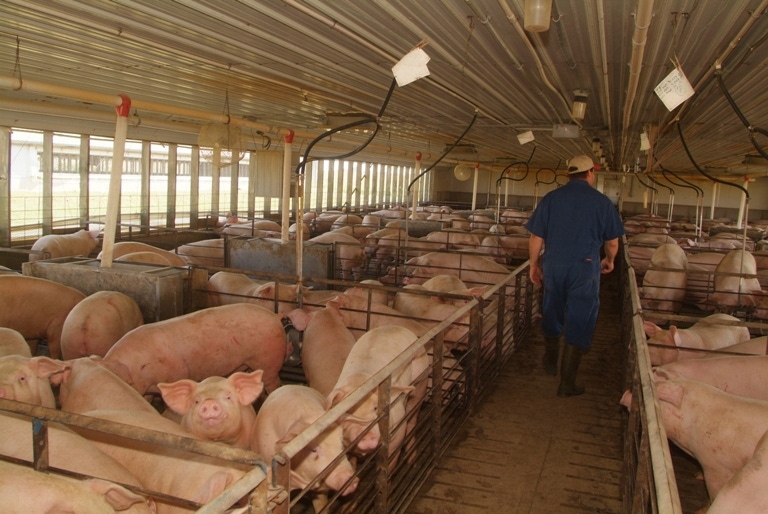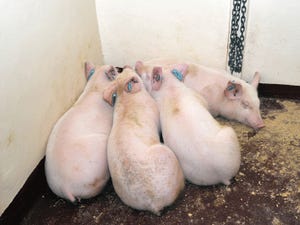Stop myco and circovirus losses
Focus on mycoplasma and circovirus prove profitable for pig producers.
April 24, 2019

The goal of boosting production and profitability for pork producers has led Joseph Yaros, DVM, and veterinarian with Pipestone Veterinary Services, to focus on the control and elimination of two key pathogens.
“My main objective is to help our producers be as profitable as possible and reduce health issues in their herds,” says Yaros. “Two pathogens that plague both the profitability and health of herds are Mycoplasma hyopneumoniae and circovirus, also known as PCV2.”
When pigs are infected with Mycoplasma hyopneumoniae, bacteria colonize the respiratory tract, leading to a chronic cough which can last the entire finishing phase, says Yaros. Across the industry, it can cost producers $3 to $5 in losses per head. Myco is often transferred to piglets through infected sows.
“Once the pathogen is present in the breeding herd, the vast majority of all the pigs in the herd will show clinical signs by the time they are making it to market,” he says. “Reducing or eliminating the presence of Myco from sow production herds will allow producers to focus on other health and areas of productivity.”
Several research projects are underway within Pipestone Veterinary Services regarding Myco, including determining the best vaccination protocol, identifying the best protocol for eliminating the pathogen from a sow farm, and establishing the most sensitive sampling protocol to confirm that a farm is negative for the pathogen after attempted eradication.
Research results are showing that an investment made to eliminate Myco from sow farms can pay off for farmers.
“We know that if we can remove the pathogen from the sow farm and breeding herds, we can increase the performance of pigs and decrease the amount of antibiotics,” says Yaros. “The cost of eliminating the pathogen will pay for itself in less than one year, compared to the costs of a farmer continuing to treat and dealing with the performance loss in the herd.”
Antibiotics can be used to treat clinical symptoms of the diseases, but this treatment doesn’t eliminate the pathogen, and can lead to questions about antibiotic overuse or resistance, says Yaros.
Porcine circovirus is another economically challenging diseases for pig producers
“If pigs are left unvaccinated and the herd is located in the Midwest, the odds are very high that PCV2 will be an issue,” says Yaros.
There are a number of circovirus vaccines available, with some showing nearly 100% effectiveness in breeding and production herds. Pipestone veterinarians are conducting ongoing research to evaluate the effectiveness of available vaccines to reduce mortality and increase performance.
Yaros suggests the best approach to stabilize and eliminate bugs from your herds is a combination of vaccination and working with your veterinarian.
A new focus of research is on the new porcine circovirus type 3 that is causing effects at sow farms from a breeding perspective. The clinic is working to evaluate the level of impact and determine the most effective courses of therapy and treatment.
Anyone with questions about ongoing research or to learn about vaccine and protocol recommendations for combating mycoplasma hyopneumoniae and circovirus should contact their veterinarian.
Source: Pipestone Veterinary Services, which is solely responsible for the information provided, and wholly owns the information. Informa Business Media and all its subsidiaries are not responsible for any of the content contained in this information asset.
You May Also Like



